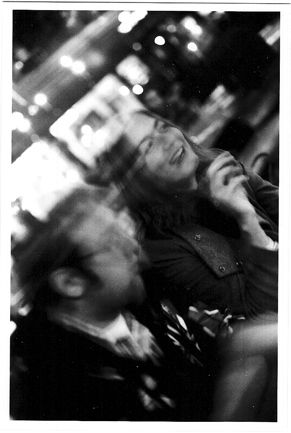On gangsters, mental models, and beautiful interactions.

To create beautiful interactions, maybe interaction designers should learn ASL and make friends with gangsters. In Losing the Language of Silence, Lou Ann Walker writes:
On the intimacy of signing:
What is it about sign language that makes people want to fight for it? Robert Pinsky wrote a poem in collaboration with deaf students depicting ASL as “a language, full of grace … visible, invisible, dark, and clear.” It is a language of extraordinary intimacy. If French is the language of lovers and German the language of commerce, then perhaps sign is the language of humans connecting. You can’t sign to someone if you’re standing next to that person. You have to look full-on at each other—watch each other’s faces and necks, shoulders and elbows, hips and knees. You have to stand a bit farther back than you do with spoken language so that you can take in the entirety of the person, and take in that entirety you must. A mother cannot stir the soup and shout over her shoulder for her child to finish homework. Instead, she puts down the spoon, goes to find the child, faces the child, and signs. She watches the child’s response carefully and responds to what the child is doing or not doing, saying or not saying.
On its beauty and elegance:
The emphasis in sign language is on visual creativity. Whereas a hearing teenager might frequently repeat “like” and “so,” deaf people encourage each other to play with the language, expand the poetry in everyday speech. A turbulent plane ride isn’t “like so bouncing, like I thought I would toss my lunch, like that plane just dropped.” No, this jet cruising at top speed hit clouds, bounced, swirled, swooped up, down, overhead bins popping open, clothing tumbling onto heads, tray table wobbling, stomach so tense, so nervous. In sign, articles and prepositions that have nothing to do with setting up the visual field are thrown out. Instead of telling a story in a linear way, several events are related at once. The deaf storyteller holds onto the stomach while relating the actual movement of the aircraft. People speak of the music of sign. Yet I see it more as a painting—it’s the complexity of the painting you take in, the totality of the Matisse, the Monet. Signing is about playing with negative space as much as with positive.
Driving along North Ave in Baltimore on the way to Gwynn’s Falls, Will and I often see people on the corner making hand signals that we’ve never seen anywhere else. Not all that surprising: we see lots of stuff in Baltimore that we’ve never seen anywhere else. Like people crossing major arterials wherever and whenever. Trash every where. Eviscerated, crumbling rowhouses that look like they’ve had their eyes poked out in a drunken brawl, sheets of plywood serving as bandaids that cover lonely, empty wounds. Toothless, rumpled vendors selling flowers, newspapers, and bottled water from freeway entrance intersections. The homeless and disabled, wheeling themselves into throngs of slow-moving rush hour traffic to solicit motorists for spare change. The Charm City fascinates me.
With arm outstretched and pointing down, the index finger points toward the ground, moving up and down twice. Pause. Up and down twice. Pause.
Avid fans of The Wire and well aware of the role illegal drugs play in Baltimore’s urban economy, we just figured this was a signal: Hey! Get your drugs here. Heroin, crack, weed, yellow tops, white tops, whatever. C’mon, you upper middle class white girl. Let me sell you something. Just a little. I can make you feel real good.
So I researched this hand signal. Via informal feedback from the interwebs, it seems it is unique to Baltimore, but may or may not be a drug sign. It’s also thought to be a signal for “hacking”. Hacking being a term for illegal taxis. Illegal taxis? Really?? Wow, you learn something new everyday.
I also discovered “stacking“, which refers to signing used by gangs. And this video on Vimeo (I encourage you to visit the actual Vimeo page to read the poster’s description). Which makes me ponder the future of gestural interfaces, and about designers using existing sign languages and dialects – black or white – to communicate with machines rather than creating new ones. For the hearing impaired and gangs, established mental models for gestures already exist: designers should study and exploit them.
For in 10 to 20 years, who knows? The way technology is heading, we may all speak sign language then.